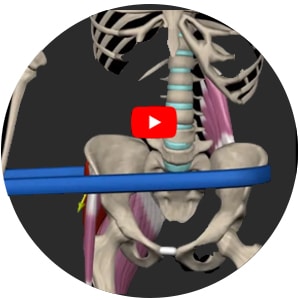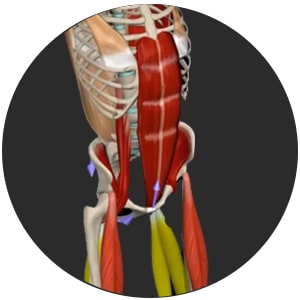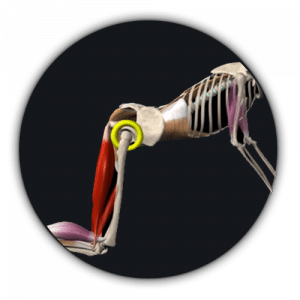Pistol Squat
The challenges of the Pistol Squat and How to Deal with Them
The Pistol Squat exercise is different and more complex than the Single-Leg Squat. Aside from the strength needed to raise the whole body on one leg, the high mobility in the ankle and the flexible hamstrings needed make it challenging for many trainees with a limited range of motion.
In this article, you’ll find the right way to perform a Pistol Squat, an anatomical analysis of this exercise, the biomechanical reasons that make it challenging for many, and possible solutions for these challenges.
First. That’s How You Should Perfrom a Pistol Squat.
➔ Stand with your legs at shoulder width and shift your weight to one leg.
➔ Lift the other leg straight up in the air and bring your hands forward.
➔ Shift your weight to the heel and start bending the standing leg’s knee while rolling your pelvis slightly backward.
➔ Get into a full one-legged squat and actively lift the other leg in the air with its knee locked and the toes facing up.
➔ Push through your heel to go back up.
Anatomical Analysis
The main active muscles are the same as those in a squat.
The Quadriceps extends the knee.
The Gluteus Maximus extends the hip with the Hamstrings and Hip Adductors’ assistance.
The Gastrocnemius performs plantar flexion in the ankle along with the Soleus.
Stabilizing are the Gluteus medius and minimus, and core muscles.
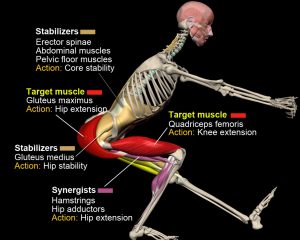
Here are a few tips that will help you overcome your challenges
To keep the leg up in the air requires an above-average range of motion in the Hamstrings while supporting the whole body on one foot requires high mobility in the ankle.
So what are your options if you or your trainee are don’t have what it takes to perform a Pistol Squat just yet?
Option #1:
If you can’t perform a Pistol, here are a few progressions to work on until you’re ready for the full exercise (from minute 2:00 in our YouTube video)
Option #2:
Performing a Pistol Squat on a box does not require you to lift high the inactive leg, in other words, to neutralize one of the common problems of tight hamstrings which do not allow you to raise your leg while performing the exercise on the floor.
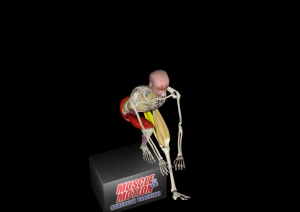
Option #3:
Here is one trick to make Pistol squatting easier, even with a lack of ankle mobility. Your ankle needs to flex enough to let your knee come forward over your toes. Restricted ankle dorsiflexion does not allow the body’s line of gravity to extend beyond the foot, and as a result, you’d fall backward.
Go barefoot (so you don’t have any free ankle mobility) and get your center of mass as far forward as possible. That means to get your head, trunk, or arms as far forward as possible. It’s going to be a whole lot easier than trying to stay vertical during a Pistol. If you’d try to do a Pistol Squat totally upright, you’re doomed to fail.
Every degree of ankle and hip mobility that you get, the easier Pistols will become, and the safer they will be.
Thanks to Shane from GotROM for this video)
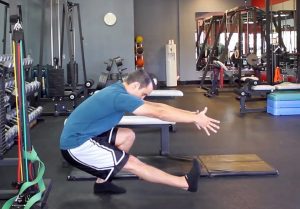
What are the Common Problems that Block Trainees from Succeeding the Pistol Squat?
Let’s get deeper into each physical restriction and its possible solutions.
Lack of ankle mobility
Your ankle needs to flex enough to let your knee come forward over your toes.
Restricted ankle dorsiflexion does not allow the body’s line of gravity to extend beyond the foot, and as a result, you’ll fall backward.
Possible solutions to ankle limitations:
➔ An elevation under the heel (temporary solution).
➔ Mobility exercises for the ankle.
➔ Performing the squat until the full range of ankle movement is reached.
Tight Hamstrings and Quadriceps Activity
Bending forward stretches the non-working leg’s Hamstrings to beyond the average length.
If the Hamstrings are tight (which they are, in most people), the Quadriceps works harder to try to straighten the leg, if it is at all possible.
In addition, the Rectus Femoris flexes the hip (with other hip flexors)
Tight Hamstrings pull the leg downward (hip extension).
The Rectus Femoris works harder to extend the knee and to prevent hip extension (to keep the leg straight in the air)
In addition, the Rectus Femoris enters into active insufficiency (hip flexion + knee extension).
The Rectus Femoris reaches a length at which it can no longer generate a useful amount of tension.
And therefore, those who have a tight hamstring or even average flexibility will find it hard to keep the leg straight in the air. The Hamstrings pull strongly and bend one side of the calf, and on its other side, they pull the pelvis into a posterior pelvic tilt.
An interesting paradox is created here. Our muscles fight one another, one pulling and the other trying to pull in the opposite direction even though it is already in a weak position.
Strength training is a process and a journey.
We can’t expect to achieve each of our goals just by wanting them. We need to work hard, and smart.
To understand our (or our trainees) limits and see how to work with them and improve them.
Knowledge is power, literally 🙂
Target Muscles
➔ Quadriceps Femoris
➔ Gluteus Maximus
Synergists
➔ Hamstrings
➔ Adductor Magnus
➔ Gastrocnemius
Stabilizers
➔ Abdominal muscles
➔ Erector Spinae
For more videos, Log into the Strength Training app. Watch more than 1000+ exercises with full anatomical analysis for each, FREE access to a variety of exercises!
GETTING RESULTS OR GETTING IN WRONG? YOU DECIDE.

